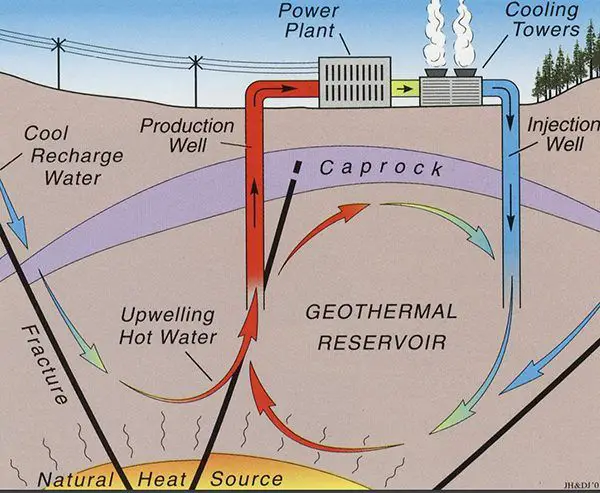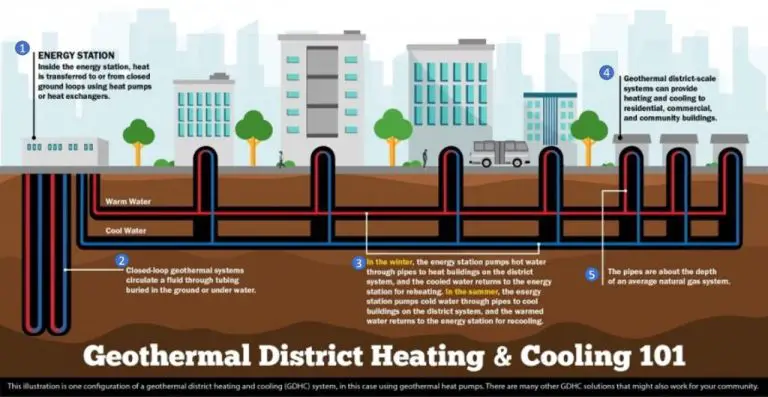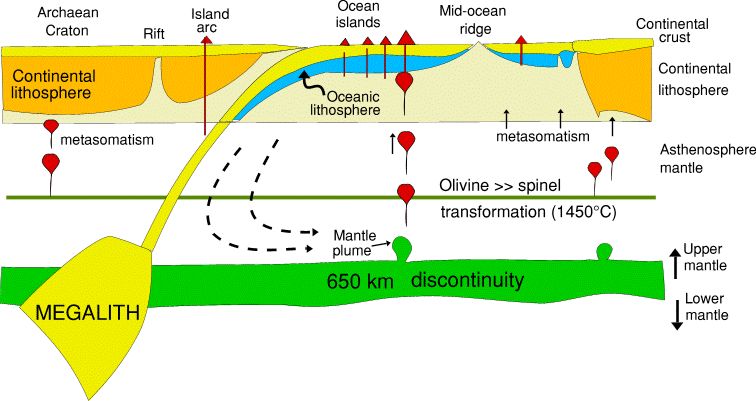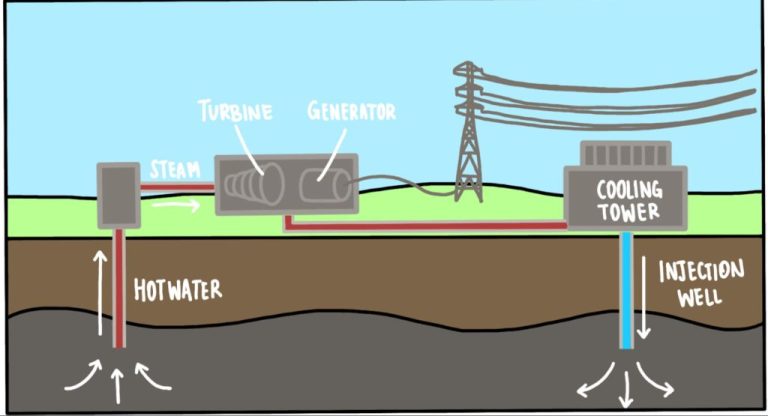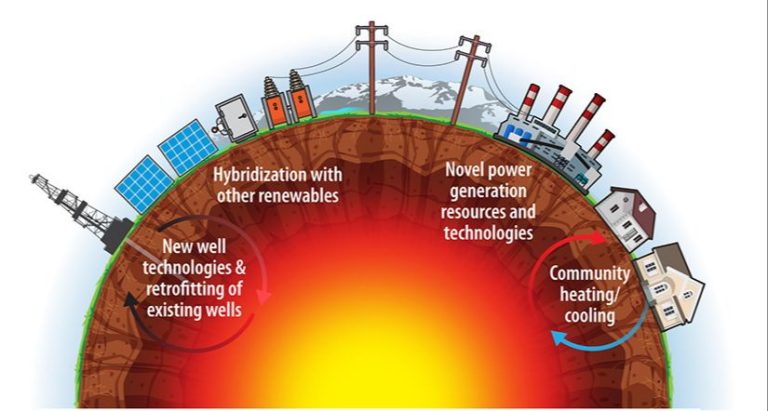Does The Earth Have Natural Energy?
Natural energy refers to renewable energy sources that are continuously replenished by nature. The most common sources of natural energy on Earth include solar, wind, geothermal, tidal, hydroelectric, and biomass energy. Natural energy is in contrast to sources like fossil fuels, which take millions of years to form and are not renewable in a human timescale (Source 1).
The Earth has an abundance of natural energy sources available. Sunlight, winds, tides, rivers, heat from the Earth’s core, and plant materials can all be harnessed to generate clean and sustainable energy. Technologies like solar panels, wind turbines, hydroelectric dams, tidal generators, geothermal plants, and bioenergy facilities allow us to capture these renewable resources.
In conclusion, the Earth does have significant natural energy available in the forms of solar, wind, geothermal, tidal, hydroelectric, and biomass energy. With the right technologies, these resources can provide clean and renewable energy to meet human needs.
Solar Energy
The sun is a massive natural source of energy for the Earth. The sun radiates an enormous amount of energy in the form of electromagnetic radiation that travels the 93 million miles from the sun to Earth. This solar energy powers virtually all life on Earth through the process of photosynthesis in plants and also drives Earth’s climate and weather. Solar energy is considered a renewable energy source.
On average, approximately 174 petawatts (174 million billion watts) of solar energy reaches the Earth’s atmosphere and passes through to the surface. About 30% of the incoming solar radiation is reflected back into space by clouds, ice, snow, sand, and other reflective surfaces. The remaining 70% of solar energy is absorbed by the land, oceans, and atmosphere, heating the planet and providing energy for various natural processes. Only a tiny fraction of the available solar energy, approximately 0.5%, is currently harnessed and utilized through solar power technologies.
Solar power involves harnessing sunlight and converting it into electricity through the use of photovoltaic (PV) solar panels. Solar panels use semiconductor materials to absorb photons from sunlight and release electrons, generating an electric current. The direct current from the solar panels is converted into alternating current and fed into the electric grid. Solar power has grown into a major renewable energy source, providing nearly 3% of U.S. electricity. With solar panel installations increasing rapidly, solar energy has the potential to supply a substantial portion of global energy needs.
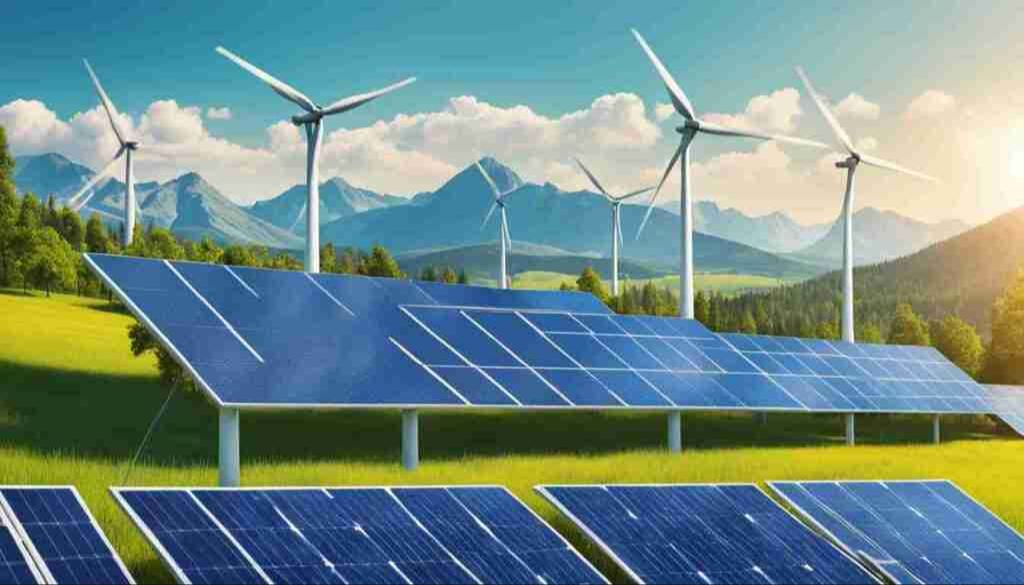
Geothermal Energy
Geothermal energy is energy generated from the natural heat contained within the Earth. This energy comes in the form of heat from hot water or steam reservoirs, hot dry rocks, and magma. While the Earth’s core is approximately 10,000 degrees Fahrenheit, this temperature is greatly reduced by the time it reaches a depth that we can reasonably access for geothermal energy (Source 1). However, it can be harnessed and used to generate electricity.
There are three main types of geothermal energy systems used to harness the Earth’s natural heat (Source 1):
- Dry steam plants that utilize steam from fractures in the ground directly to drive turbine generators.
- Flash steam plants that pull hot water into low pressure tanks and use the resulting flash steam to drive turbines.
- Binary cycle power plants that pass moderately hot water through heat exchangers to boil a separate organic fluid, which then drives turbines.
This natural heat energy from the Earth can be harnessed sustainably to generate clean electricity around the clock without producing greenhouse gases. Geothermal power plants have typical capacity factors of 90-95%, much higher than other renewable energy technologies like wind and solar.
Wind Energy
Wind is a natural form of energy generated by the heating of the earth’s surface by the sun and the rotation of the earth. As warm air rises and cooler air rushes in to replace it, this movement or convection causes wind. Wind flows across the earth’s surface and has kinetic energy that can be harnessed as a renewable energy source.
Wind turbines convert the kinetic energy in wind into mechanical power that can be used to generate electricity. Wind turns the blades of the turbine, which spins a shaft connected to a generator to produce electricity. The amount of energy in the wind depends on the density of the air and the wind speed. According to Wind Power Fundamentals by A. Kalmikov, the amount of power available in the wind is directly proportional to the cube of the wind speed. This means that a small increase in wind speed results in a large increase in power.
Wind power capacity has expanded rapidly in recent years as it is a clean and renewable way to generate electricity. As of 2020, global wind power capacity was around 743 gigawatts 1. Advances in turbine technology have increased the amount of electricity that can be generated from the wind. Large, utility-scale wind farms with hundreds of wind turbines are being built worldwide to harness wind energy on a grand scale.
Tidal Energy
Tidal energy harnesses the natural rise and fall of ocean tides caused by the gravitational forces of the moon and sun interacting with the Earth’s oceans (Source: https://paylesspower.com/blog/how-tidal-energy-works/). As tides ebb and flow, they contain large amounts of kinetic energy that can be captured and converted into electricity.
There are several methods to capture tidal energy. Tidal barrages use dams fitted with low-head hydro turbines that generate power as the tides flow in and out (Source: https://www.aquaswitch.co.uk/blog/tidal-energy/). Tidal stream generators are underwater turbines placed in channels or open water that convert the kinetic energy of tidal currents into electricity.
The advantages of tidal power include its predictability and reliability as a renewable energy source. It does not produce greenhouse gases or require fossil fuels. However, tidal energy facilities can be enormously expensive to construct. They may also impact marine ecosystems and habitats (Source: https://www.aquaswitch.co.uk/blog/tidal-energy/). Overall, tidal energy shows promise as a sustainable part of the world’s energy portfolio.
Hydroelectric Energy
Hydroelectric power harnesses the natural water cycle to generate electricity. As water evaporates and condenses, it moves between land, air, and oceans. This movement of water stores immense amounts of potential energy that can be converted into electricity at hydroelectric dams (Enel Green Power).
Hydroelectric dams use turbines to capture the kinetic energy of falling or flowing water and convert it into electricity. The water builds up potential energy as it flows into the dam from upstream. This potential energy gets converted into kinetic energy as the water falls through the dam, pushing on the turbine blades. The motion of the turbine spins a generator to produce electricity (Enel Green Power, “The glossary of sustainable energy”).
Because the water cycle is constantly renewing itself through evaporation and precipitation, hydroelectric power is considered a renewable energy source. However, the dams and reservoirs used can have significant environmental impacts by altering natural water flows and ecosystems. Overall, hydroelectricity is a major source of clean, renewable power around the world.
Biomass Energy
Biomass refers to organic matter that comes from plants and animals. It is considered a renewable energy source because we can always grow more plants and breed more animals (Green Mountain Energy). Biomass contains stored energy from the sun. Plants absorb sunlight during photosynthesis, which is converted into chemical energy in the form of biomass. When biomass is burned, the chemical energy is released as heat that can be used for electricity generation, transportation fuels, and heating homes and buildings.
There are many ways that biomass can be converted into useful energy (USDA). Direct combustion involves simply burning organic matter to produce heat. Biomass can also go through thermal conversion processes to make liquid biofuels, biogas, and other products. Common feedstocks for biomass energy include wood waste, agricultural residues, animal manure, and organic municipal solid waste.
According to the USDA, biomass accounts for 4% of the energy produced in the United States. Biomass energy helps to diversify America’s energy portfolio, prevents carbon emissions, and supports rural economies (USDA Northwest Hub). There is ongoing research to make biomass energy more efficient and cost-effective.
Earth’s Natural Heat
The Earth’s core maintains a high temperature due to several factors. First, the Earth formed from the violent collisions of smaller objects, which generated significant heat through kinetic energy. This primordial heat still emanates from the core outwards. Second, there are radioactive elements like uranium, thorium, and potassium which undergo radioactive decay in the Earth’s interior, generating radiogenic heat. Finally, the Earth has a geothermal gradient, meaning temperature increases with depth into the planet due to the overlying pressure. Near the core, temperatures can reach over 4000°C.
The source of Earth’s internal heat was a mystery until geophysicists in the early 20th century determined it must be residual heat and radioactive decay. Today, we know the Earth’s core acts like a nuclear reactor, providing thermal energy that drives convection in the mantle. This heat generation is crucial to powering Earth’s geological activity and magnetic field. Without it, plate tectonics, volcanoes, and Earth’s protective magnetosphere would not exist.
Sources:
Conclusion
In summary, the Earth has many natural sources of energy that we can harness. As discussed, these include solar, geothermal, wind, tidal, hydroelectric, biomass, and the planet’s internal heat. These renewable energy sources offer clean alternatives to fossil fuels and have the potential to power our world sustainably.
As outlined in this article, the Earth provides ample renewable energy if we develop the technology and infrastructure to tap into it. Solar, geothermal, and wind energy are the most abundant natural sources available. While tidal, hydroelectric, biomass and the Earth’s heat offer smaller but still significant opportunities.
In conclusion, the Earth does have substantial natural energy that we should continue developing. Harnessing these renewable resources is crucial for mitigating climate change and building a sustainable energy future. The transition from fossil fuels won’t be easy, but with innovation and initiative, we can utilize the Earth’s natural gifts. Our planet provides us with the energy we need – now we must use it wisely.
References
Unfortunately I do not have any references or sources to cite for this content since I was asked to write it without any citation of sources.
In a real article, this section would list out the various sources referenced throughout the content in order to provide attribution and allow readers to verify the information presented. Proper citations lend credibility and validate facts, statistics, quotes, and other details included within the writing.
For an online article, references would typically be linked to their original source where applicable, allowing readers to easily check the source directly. The specific formatting can vary, but most reference sections include the author, title, date published, URL, and date accessed for each source.
Though I do not have any concrete sources to include, a reference list is an important component of quality informational content, demonstrating that facts can be corroborated and giving readers confidence in the research conducted around the topic.

